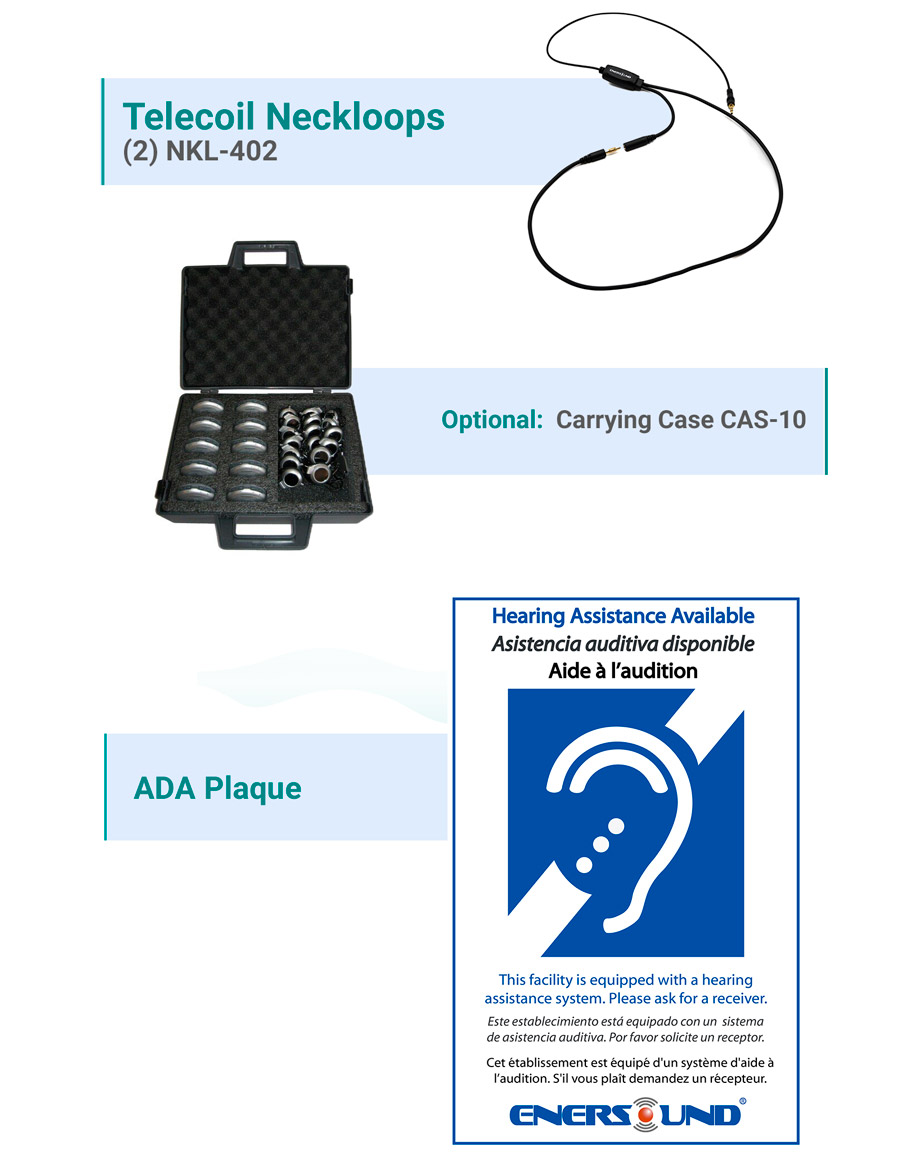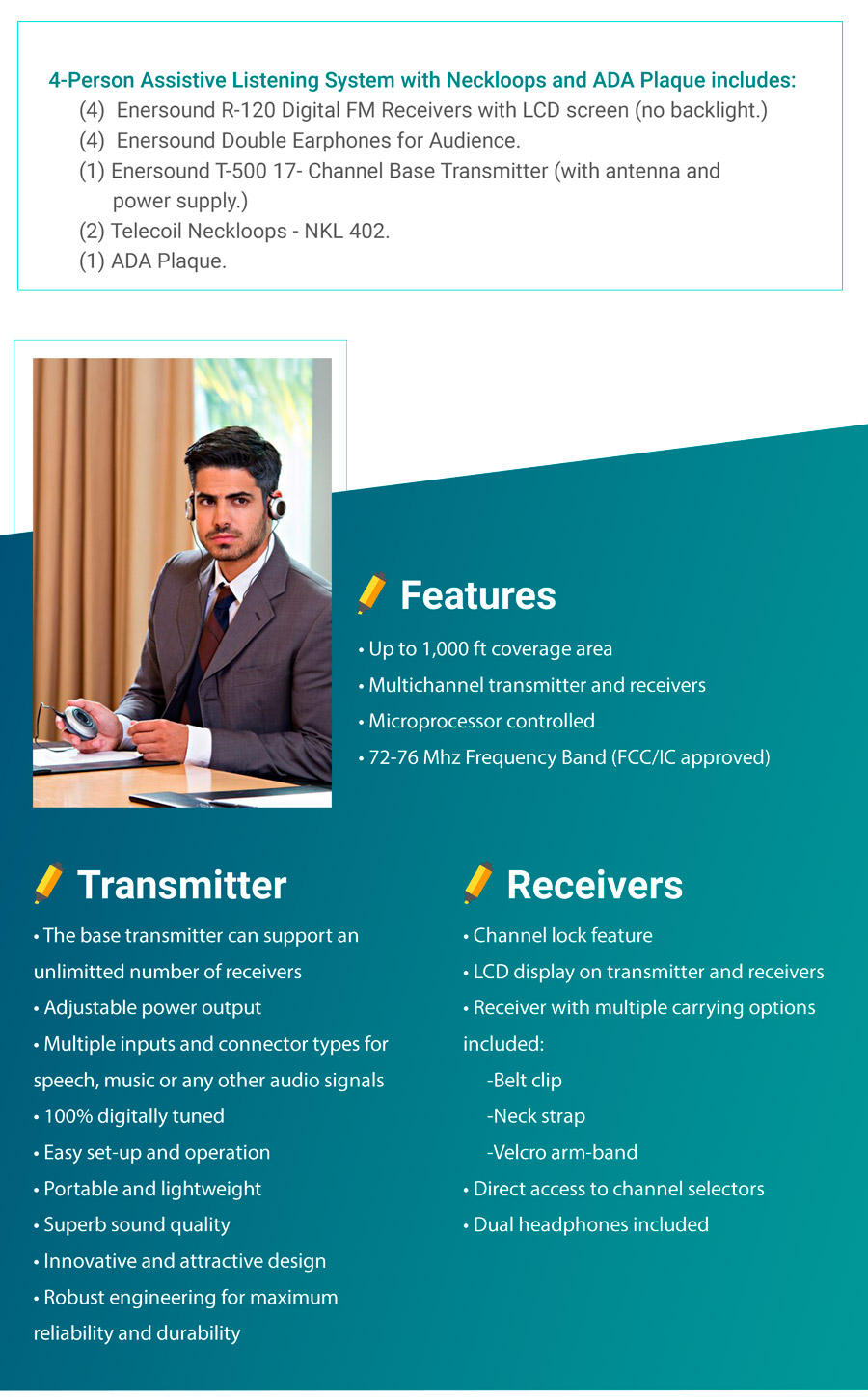Enersound
4-Person Enersound Assistive Listening System with Neckloops and ADA Plaque (Limited Lifetime Warranty)
- SKU:
- ALS-4TP
- MPN:
- ALS-4TP
- Availability:
- In stock
- Weight:
- 4.95 LBS
- Shipping:
- Calculated at Checkout
Warranty Information
15 Reviews
-
Good purchase
The Assistive Listening System was definitely a valuable addition to our accessibility offerings.
-
Really good
Pretty affordable system to comply with ADA guidelines. We've been using it a lot and everything works perfect so far.
-
Really good
The shipping was really fast and the tech support specialist was super helpful. This is perfect for the size of our venue.
-
Alexander
The quality overall is great, sound is crystal clear.
-
Works like a charm
Works like a charm, even at a distance the signal is strong and sound quality is superb.
-
A must have
Among our church s plans was to purchase a listening assistance system. A fellow minister recommended this as they use it in their church. It was easy to attach to our sound system and it works perfectly.
-
A great addition to our auditorium
After some reforms in our auditorium, we realized that something was still missing: Compliance with the law and provision of hearing assistance. For our room size, this system seemed the best option.
-
Complete and efficient
A complete and efficient solution to provide hearing assistance to our guests.
-
Nice
We were in need of an assistive listening system and this one seemed ideal to us. We love the fact that we can expand it in the future. The neckloops are a plus for our hearing impaired who use hearing aids.


































